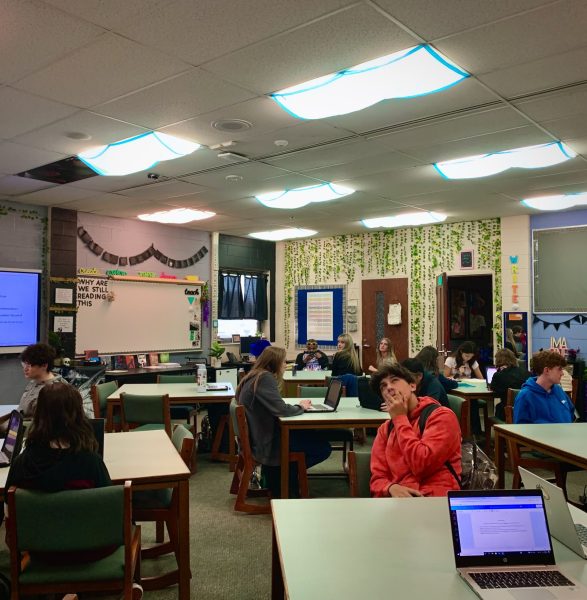A Critique of the Education System in the United States (Part 2)
A continuation of the opinionated article that discussed the struggles of being a high school student with the current education system in place from the perspective of a high school senior.
With a few other issues addressed in the previous article, this will elaborate on and continue to discuss the other factors plaguing the education system in the United States.
Here is a Continued List of the Current Issues:
Overcrowding:
- “At the other end of the spectrum, approximately 14 percent of schools had enrollments that were 6 to 25 percent greater than the capacity of their permanent instructional buildings and space, and 8 percent had enrollments that exceeded their permanent capacity by more than 25 percent” (National Center for Education Statistics).
- “When there are more students in the classroom, teachers can’t spend the same amount of time with each student. If a student is finding it hard to understand a particular topic, there may not be enough time to attend to him/her because there are thirty or more other students in the same class” (Patch).
- “Overcrowding reduces students’ ability to pay attention and increases school violence…rates of teacher and student absenteeism are higher than at schools that do not have these problems…interrupted and lost instructional time; limited access to advanced courses and specialized programs; ill-timed breaks and correspondingly limited access to extracurricular activities and enrichment programs; and poorer academic performance” (Community and Environmental Defense Services).
Overcrowding is an especially large issue in Michigan, having an average of 26.4 students per classroom, which appears to be on the higher end of the spectrum (National Center for Education Statistics). Thus, finding ways to help relieve the stress overcrowding places on the teachers and students who need assistance is, frankly, necessary.
Core Curriculum
- “The illusion of a coherent, well-coordinated system is gained at the expense of teachers’ flexibility in tailoring instruction to serve their students. Classrooms are teeming with variation” (Brookings).
- “Another flaw in the theory is that no one knows what standards as written will look like when they are ultimately implemented. Standards must pass through many organizational layers—from state to district to school to classroom—before coming in contact with students. Each transition allows reinterpretation to fit educators’ beliefs about how reading and math should be taught” (Brookings).
With this, the standards that the students are held to are inherently biased, making it difficult for those who think differently from the curriculum to succeed within schools. In addition to this, the lack of variation allowed within the system practically guarantees failure, as when the students are failing the program, the teachers are not allowed to change the style in which they are allowed to teach.
Government Funding and Teacher Salaries
- “Our current system for funding public schools shortchanges students, particularly low-income students…those problems are magnified during and after recessions” (Economy Policy Institute).
- “Teachers earn 23.5 percent less than comparable college graduates…In other words, on average, teachers earn 76.5 cents on the dollar compared with what college graduates earned working in other professions” (Education Week).
- “One new analysis conservatively estimates that there are more than 36,500 teacher vacancies across the United States, and the majority of states are experiencing teacher shortages. Yet teacher-preparation enrollment has been declining steadily by about a third in the past decade, which some experts attribute to the low pay and perceived lack of respect” (Education Week).
With a lack of government funding, it further produces inequities in the community. For example, during COVID-19, some students who received free lunches or internet at the school could not access those resources during the lockdown. In addition to this, an increasing number of teachers are leaving the profession due to the low pay and lack of respect, producing a massive teacher shortage. This in turn affects students’ education, as they may end up being stuck with a long-term sub for the rest of the year.
Addressing the Issues:
For one, overcrowding has always been quite a tough issue to address, especially in regard to prisons. Thus, finding ways to fund new schools as well as using stricter laws could assist in reducing classroom sizes.
However, with how difficult it is to receive funding for schools from the federal government, then by increasing the amount schools receive, the states will be able to open new schools to relieve the pressure from teachers and students alike.
For example, Dakota has an extremely large population, almost that of a small town, so there are about 22.42 students per classroom (National Center for Education Statistics). This can make it difficult for students to receive the help they need regarding curriculum and can also affect how well a student can focus in the classroom.
Even so, teacher salaries are a more prevalent issue than most likely think. With the low pay, this produces the lack of desire from teachers to even stay with their current jobs, creating more teacher openings than ever before.
Some teachers have to work two jobs to make ends meet, which is what a college professor at Saginaw Valley State University has to do. She has to work at Target as well as at Saginaw, both being full-time jobs, to help support her family.
Thus, increasing pay for teachers will likely attract more people who will become interesting in the career as well as create better teaching environments, as the teacher would likely become more passionate about their subject if they were to get paid more.
So, advocating for change, especially to your school board and government, is the way to go. Change will not occur without support from the student body as well as the teachers, so if you believe in addressing any of the issues mentioned in part one and two, do so.
Your donation will support the student journalists of Dakota High School. Your contribution will allow us to purchase equipment and cover our annual website hosting costs.

Jade Lilly is a senior at Dakota High School. This is her first year writing for the Dakota Planet, but she has plenty of experience towards writing professional...















